Entrepreneurial resources
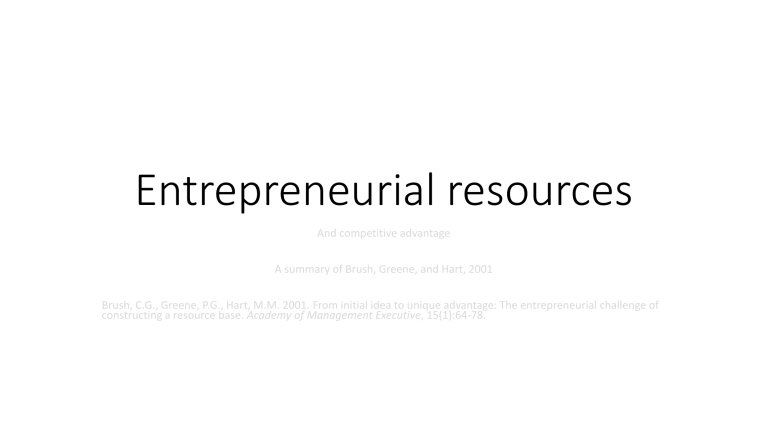
Entrepreneurial resources
And competitive advantage
A summary of Brush, Greene, and Hart, 2001
Brush, C.G., Greene, P.G., Hart, M.M. 2001. From initial idea to unique advantage: The entrepreneurial challenge of constructing a resource base. Academy of Management Executive, 15(1):64-78.
Introduction: From initial idea to unique advantage
• Before there is a company, there is an entrepreneur with an idea – the idea may meet a perceived market opportunity, solve a social problem, or be just a better way of doing things
• One of the first challenges is deciding which resources to focus on when building an initial resource base
• Start-ups lack operating history, have no customer base, no reputation for performance, and often no shared experience (among founding team members)
• Every year a majority of start-ups fail or cease operations because of ineffective management, lack of capital, human failings, or inability to attract and retain talented people
• Start-ups need to focus on creating unique capabilities rooted in innovative combinations of resources
Entrepreneurial resources
• Entrepreneurship is a process of starting up and growing
• These processes emphasize importance of money, people, information, etc. that must be acquired to launch and grow new venture
• The entrepreneur is the primary resource, and his/her expectations about the future drive decisions about strategic direction (and therefore resource accumulation)
• Constructing an initial resource base requires that resources be identified, assembled, and acquired to meet a perceived opportunity before they can be used to execute the strategy
What resources?
• Human
• Social
• Physical
• Financial
• Technological
• Organizational
Resource attributes: simple versus complex
Simple
• Tangible
• Discrete
• Property-based
• Example: financial resources are quantifiable and tangible
Complex
• Intangible
• Systemic
• Knowledge-based
• Example: human resources are difficult to identify and measure plus largely intangible
Resource attributes: utilitarian vs instrumental
Utilitarian
• Applied directly to the productive process or combined to develop other resources
• Examples: machinery, trucks, office space
Instrumental
• Used specifically to provide access to other resources
• Example: financial resources
Jeff Hawkins and Donna Dubinsky
Jeff Hawkins
1992 – Palm Computing
• Excellent reputation and tech knowledge
• Patent for handwriting algorithm
• No $, management experience, business plan, management team, or product
• Leveraged his knowledge, reputation, and relationships to get access to human, physical, and financial resources to build Palm
1998 - Handspring
• Tech knowledge, management experience, management team, personal money, deeper understanding of customer needs and suppliers
• No business plan, product, or patents
• Launched Handspring without using outside investors and leveraged shared team experience
Resource development at Palm Computing
Starting resource base
Resource development at Handspring
Starting resource base
Resource pyramid of value creation
Strategic assets that are valuable, rare, and costly to imitate
Core competencies that contribute to valuecreating aspects of competitive advantage
Capabilities that are crucial to firm’s mission and executed consistently well
Combinations of generic resources that enhance firm’s abilities
Easy to identify and access, given sufficient capital
How entrepreneurs identify and develop resources
1. Assembling – first resources are entrepreneur’s education, experience, reputation, network contacts, industry knowledge
2. Attracting – start-up’s lack of reputation and track record heightens perception of risk on the part of potential resources providers – entrepreneurs act as if they were trustworthy through business plans or facilities to create an image of success
3. Combining – decisions about how to combine resources directly affects further development of the resource base – entrepreneurs have different beliefs
4. Transforming personal resources into organizational ones – the entrepreneur institutionalizes his/her knowledge, capabilities, and vision to provide for continued growth and greater complexity and value
The entrepreneurial challenge
• A new idea can become a great success story and result in significant wealth creation if a company’s resource position is strategically developed from the time of its initial launch
• Entrepreneurs in start-ups must first construct their resource base and build a foundation from which capabilities can be developed
• The resource development pathway is a tool for analyzing the resource development trajectory based on resource types, dimensions, and applications
• The resource pyramid of value creation can show the level of resource development and create a strategy for extending personal resources to organizational resources and a unique advantage

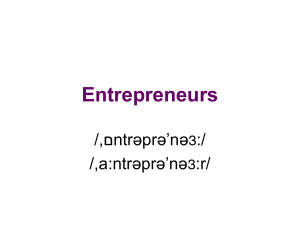
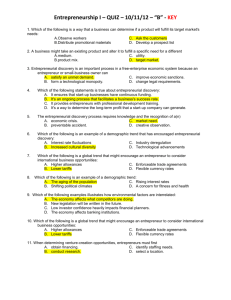

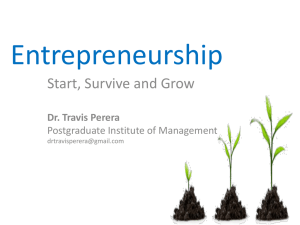
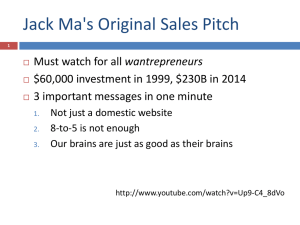



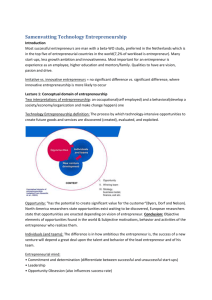
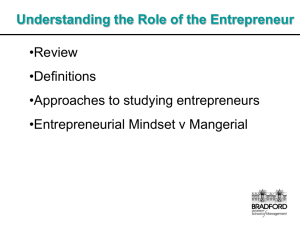
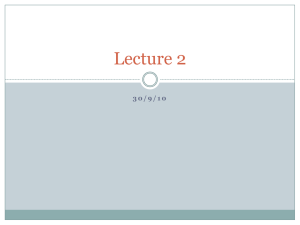
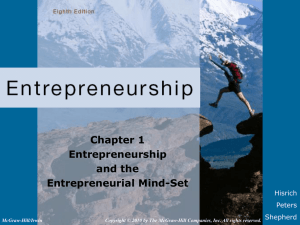
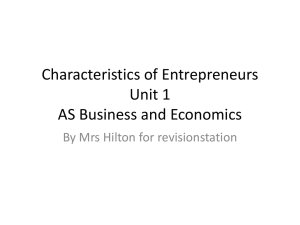
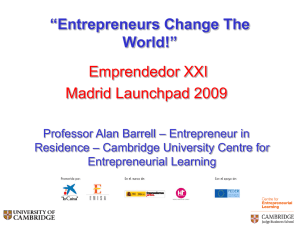
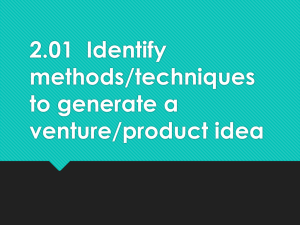
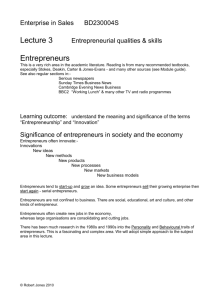
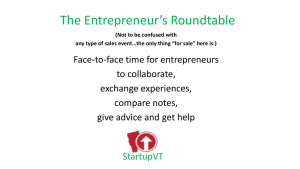
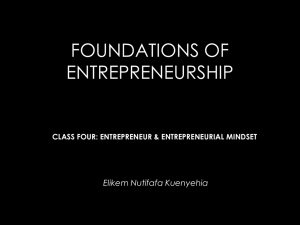
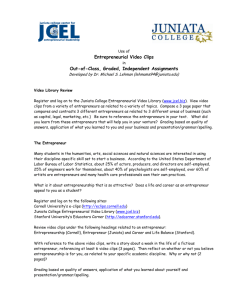
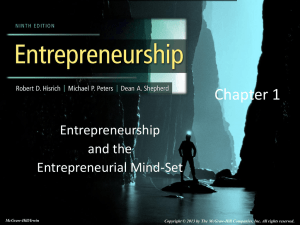
![[01]. Entrepreneurship and the Entrepreneurial Mind-Set](http://s2.studylib.net/store/data/005488085_2-146a4b12485f0514f12623d59566b5e3-300x300.png)